

The African continent boasts a 26,000-kilometre-long coastline dotted with over 100 ports and harbours. However, only a few can handle significant cargo and container traffic volumes. African ports have the strategic advantages of being positioned amidst major global trade routes but lack infrastructural development and modern equipment.
Though natural resources abound, Africa is still one of the least developed continents, a consequence of European colonisation, the effects of cold war, and the ongoing civil unrest and genocide in some of its countries which have arrested overall growth.
However, according to economic scientists, some African countries could achieve Middle-income status by 2025. Angola, Sudan and Guinea have experienced commendable economic progress in the past years due to a change in government policies, the extraction of oil and petroleum and rising literacy rates among the youth.
A steadily growing services and commercial sector propels the continent forward, which stands at the crossroads of agricultural reform and industrial growth. African shipping has also improved with increased foreign investments and port management partnerships. China has been a prominent investor and trade partner since 2009, followed by the United States and India. The exports are led by mineral fuels such as oil, petroleum, gems and precious stones, coffee and cotton.
In this article, let us review the ten major ports of Africa.
Mombasa is a natural deepwater port in Kenya along the southeastern Indian Ocean coastline. It is the leading international seaport of Kenya and one of the busiest in East Africa. A trading hub since medieval times, Mombasa flourished in the 18th century with the arrival of Portuguese sailors and Arab traders engaged in the Spice and Slave trade.
Today, Mombasa port is well equipped for processing varied cargo types, including dry cargo like fertilisers, grains, cement, and soda ash; liquid bulk such as crude oil and petroleum; bagged products including coffee, tea, and sugar. It can also deal with breakbulk, timber iron and steel, automobiles, machinery and containerised cargo.
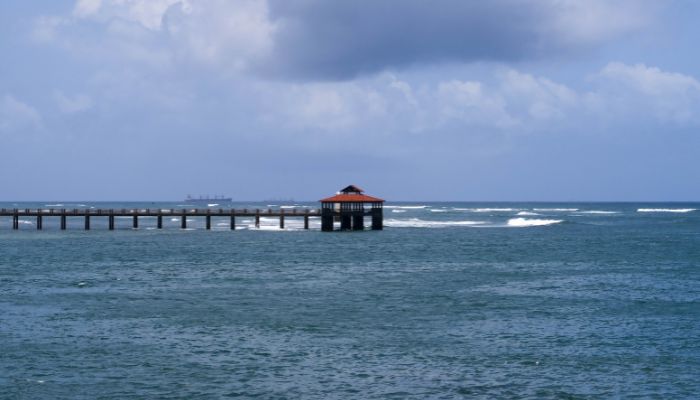

Mombasa is also a famous centre of coastal tourism and receives cruise ships on its two dedicated passenger berths. The African Marine and General Engineering Company offer ship repair and maintenance facilities.
Apart from serving Kenya, Mombasa also handles the maritime trade of inland African countries like Uganda, Burundi, Rwanda, eastern Congo, Ethiopia and the southern part of Sudan. It is directly linked with important Western Europe, Asia, America and the Far East ports. Regular feeder services connect Mombasa to Dar-es-salaam, Mogadishu, Durban and Dubai.
Mombasa has undergone various expansion projects and emerged as a facility at par with global port standards, thus contributing generously to the Kenyan economy. Approximately 35.9 million tonnes of cargo and 1.49 million TEUs were handled at the port in 2020.
Mombasa port includes the Kilindini Harbour, the old port area and subsidiary ports of Reitz and Tudor. Presently, the main port comprises 19 berths divided among a bulk terminal, two oil terminals, four container wharves and 12 conventional docks.
Port Suez lies on the northern coast of the Suez Gulf, bordering the southern tip of the Suez Canal. It is one of the biggest ports in Egypt, offering breathtaking views of the Red Sea and Sinai. The port consists of three harbours, namely the Abadiya, Ain Sokhna port and Tawfiq port which are part of the Suez metropolitan area. Approximately 2,500,000 TEU and more than 2000 ships frequent the facility annually.
It is connected to the neighbouring city of Cairo and Port Said through railways and highways. Pipelines from Suez carry oil and petroleum products to the adjacent regions. The city is also a renowned tourism destination known for its sandy beaches and calm waters. On their way to the holy city of Mecca, Muslim pilgrims also arrive at Port Suez.
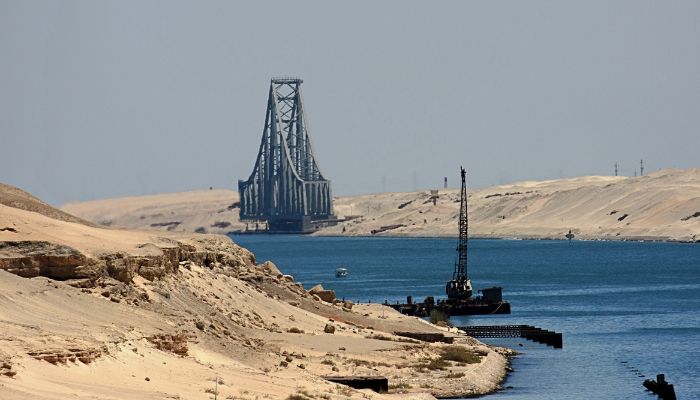

It has been a trading post since the 7th century, fed by an ancient canal system stretching from the Nile delta to the Suez Gulf. The Greek settlement of Clysma was transformed into the Muslim city of Kolsum after the coming of Arabs. Port Suez developed extensively after it passed to the Ottoman Empire, transforming it into a Turkish military post and naval station.
The port’s Ibrahim dock is the main cargo terminal incorporating extensive port facilities and wharves for accommodating general cargo ships and passenger’s vessels. The New Harbour deals with oil tankers and livestock. A different petroleum terminal lies on the eastern part of Suez port, capable of receiving the world’s most giant tankers. Lastly, the Ataka fishing harbour, bounded by the main breakwaters, supports the local fishermen community.
The Durban port is the biggest and busiest commercial facility lying on the eastern coastline of South Africa. It comprises 58 berths managed by over 22 port operators and has the 4th largest container facility in the Southern Hemisphere. Approximately 32 million tonnes of cargo and 4.5 million TEUs are handled at the port annually.
It generates around 60% of trade revenue for South Africa and is visited by more than 5000 ships every year. Transnet port terminals manage most facilities.
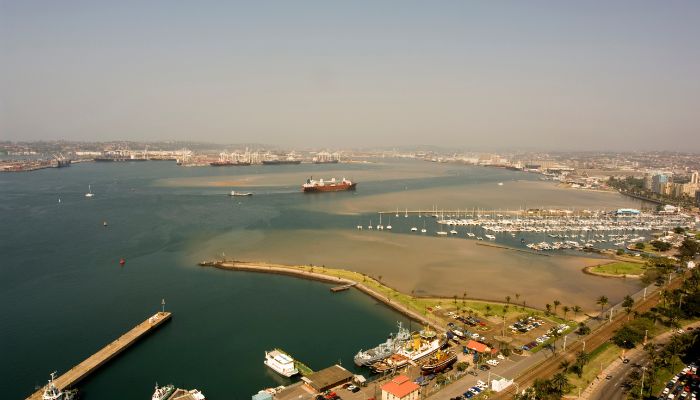

The Container terminal covers 102 hectares and has shipping links to the Far East, Middle East, South and North America, Europe and Australia. It is a crucial transhipment hub serving the eastern African region and the Indian Ocean Islands. The facility handles around 50,000 TEUs monthly on its seven container berths equipped with 13,000 ground slots and a container freight station with 600 reefer plugs.
Other facilities include a multipurpose terminal handling general cargo and break bulk on its 15 piers, a car terminal, and the Maydon wharf dealing with salt, fertilisers, mineral products, steel, scrap metal and forest products.
The Lagos Port is the most prominent Nigerian facility. It is the earliest port settlement of the country, lying in Lagos State, Nigeria’s commercial and trade hub. Situated in the Bight of Benin, it includes the ports of Apapa and Tin Can Island. The port handles wheat, oil, cement, fish, dry cargo and containers.
More than 40 per cent of Nigeria’s seaborne trade passes through this port, while it also serves the inland nations of Chad and Niger. Approximately 5,800,000 tonnes of cargo and more than 3000 ships visit the port annually.
In 1921, four deepwater berths were constructed, laying the foundation of Lagos port. Today, it is equipped with the latest equipment and semi-mechanised terminals, providing cost-effective services. The intermodal facility has a four-wheeled gate for accommodating oversized, heavy cargo, giving it an edge over the other African ports.
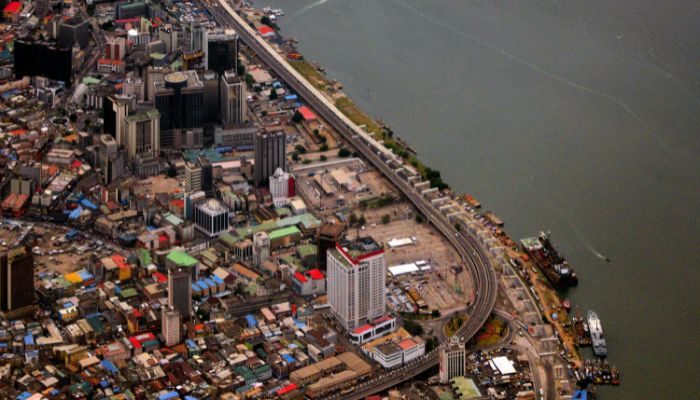

Also called the Apapa port contains five private terminals, eight jetties and two logistics bases, namely the Eko Support Services Ltd. and Lagos Deep Offshore Logistics. A few factories producing sugar, salt and flour are located in the port vicinity.
One of the largest container terminals in West Africa, the Apapa container terminal operated by the AP Moller-Maersk Group is the principal outlet for the nation’s exports. Spanning 55 hectares of land area, the facility has six piers with a total quay length of over 1000 m alongside depths of 10.5 m.
It has an annual container capacity of over 1,000,000 TEUs and is equipped with 13 mobile harbour cranes. Storage facilities include a 6000 sq m of covered warehouse space and a container yard that stores 20,000 TEUs. The terminal is decked with 298 reefer connections.
The East African port of Dar-es-Salaam is a crucial port of Tanzania, capable of handling more than 10 million tonnes of cargo, including 5 million dry bulk and 6 million liquid cargo annually. A natural, well-sheltered harbour, it consists of 11 deepwater berths stretching to 2600 m. About 95 per cent of Tanzania’s international maritime trade is handled at this facility. It also serves the landlocked nations of Zambia, Congo, Malawi, Burundi and Uganda.
The port provides convenient freight linkages to and from Eastern and Central Africa. It is also connected to major ports in the Middle East, Europe, America and Australia.
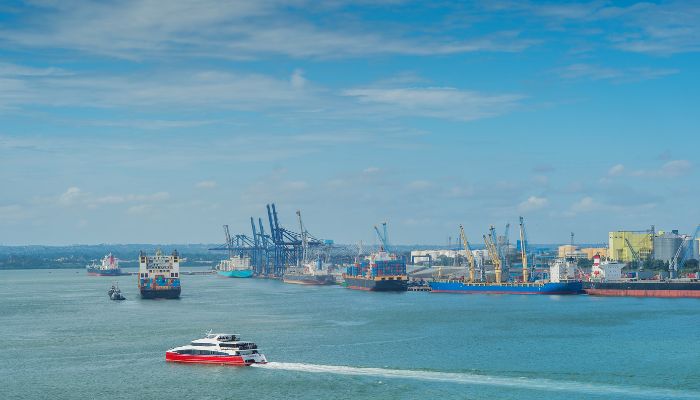

It has seven general cargo berths for handling breakbulk, roro and dry cargo. The container terminal is leased to a private company named Tanzania International Container Terminal Services Ltd. It comprises four wharves and 9650 m2 of storage area.
A fully mechanised grain terminal is located in the eastern port area with a handling capacity of 30,000 tonnes. Grains are discharged at 2000 tonnes in 24 hours or transferred to the silo tanks through dump trucks.
There are two oil terminals at the Dar-es-salaam port, including the Single point mooring and the Kurasini oil jetty. The former is an offshore tanker berth for crude and refined oil. Tankers weighing 20,000 DWT can be moored at the facility, connected to Dar es Salaam, Zambia and Ndola refineries through floating hoses and underwater pipes. The latter is a taker jetty dedicated to refined oil products only. Oil tankers up to 45,000 DWT can be received at the Kurasini berth.
Abidjan is the critical seaport of Cote d’Ivoire and one of the most prominent African ports, also serving as a transhipment hub for Mali and Burkina Faso. It ships agricultural produce, including cocoa, cotton, coffee, groundnuts, rubber, fruits, timber, fish and canned vegetables. Main imports comprise edible oil, machinery, foodstuff, building materials, steel, cosmetics and pharmaceuticals. It is divided into two port areas; the Banco bay, facilities along Canal de Vridi and the Bouet Tanker Terminal. It handled 974,872.000 TEU and over 5000 ships in 2020.
The Port’s container terminal spans 34 hectares and contains five berthing facilities with a draft of 11.5 m. A second modern terminal is being constructed at the port by reclaiming 45 hectares of land. This facility will raise the port’s container handling capacity by 2 million TEU and create more than 900 jobs. The oil terminal contains two jetties for handling petroleum products.
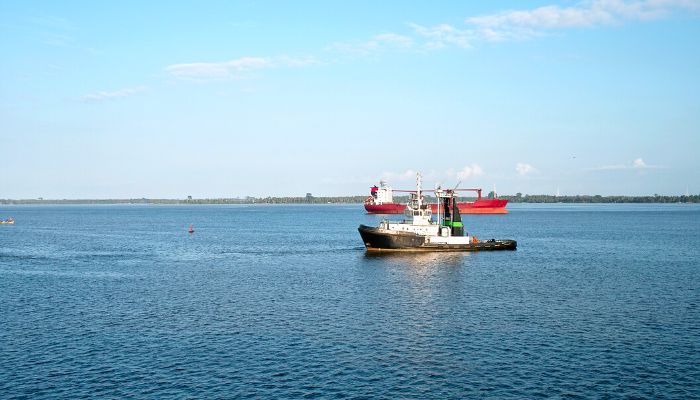

Abidjan fishing terminal has two piers and records an annual production of more than 600,000 tonnes of seafood. It is divided into an industrial fishing area and a new fishing region. Adjacent to this facility is the ship repair terminal comprising numerous workshops.
The port’s grain terminal covers 8 hectares and handles around 30,000 tonnes of wheat annually. This terminal has bagging machines for flour and rice with a processing speed of 5000 tonnes daily. About 250,000 tonnes of fresh fruits are handled annually at the two stations of the fruit terminal. A 300 m-long roro quay became operational in 2018, allowing the port to receive automobile shipments.
A new mineral berth, additional wharves and 3 terminal buildings are being constructed to increase the port’s productivity.
Beira port is situated at the confluence of the Punge and Buzi rivers. Lying in the heartland of Mozambique, it is linked to the African hinterland and serves as a vital transhipment port for Zimbabwe, Botswana, Zambia and Congo. Beira Container terminal is one of the most modern facilities in South Africa. It includes a 645 m long pier with a water depth of 12 m. It has a 10,000 TEU storage capacity and 148 reefer connections. Presently, the terminal can handle around 300,000 TEUs annually. Its total container throughput stood at 255,459 TEUs in 2020.
The port’s general cargo terminal incorporates four specialised berths covering 680 m for accommodating dry cargo carriers and breakbulk. Around 2.1 million tonnes were handled at the airport in 2020. It has five warehouses covering 15,000 m2 and a 12,000 m2 open yard for keeping ferrochrome, granite and steel.
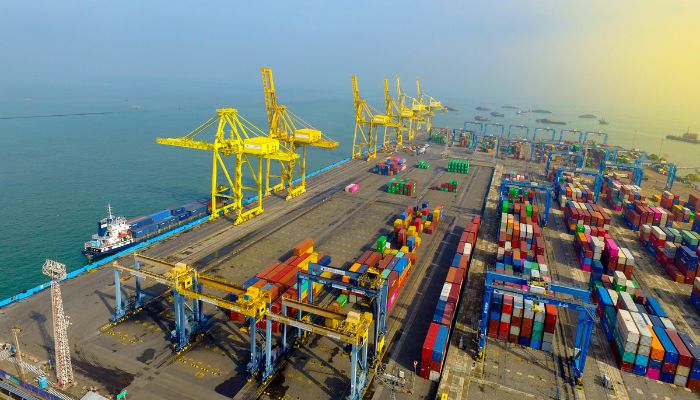

The grain terminal processes 4000 to 5000 tonnes of grains every day. It has numerous silos for storing 50,000 tonnes of wheat and maise.
Tanger Med port is located on the Gibraltar Strait, near Tangier, Morocco. It is the largest port in the North African region, possessing two container terminals, a RORO terminal, grain handling facilities and a passenger port. A premier port of Morocco, it handles more than half of the international maritime trade of Morocco and is the busiest port in the country.
Tanger Med I comprises two container terminals with an annual handling capacity of 3 million TEUs. Covering 80 hectares, they have a total quay length of 1600 m for receiving the giant container ships.
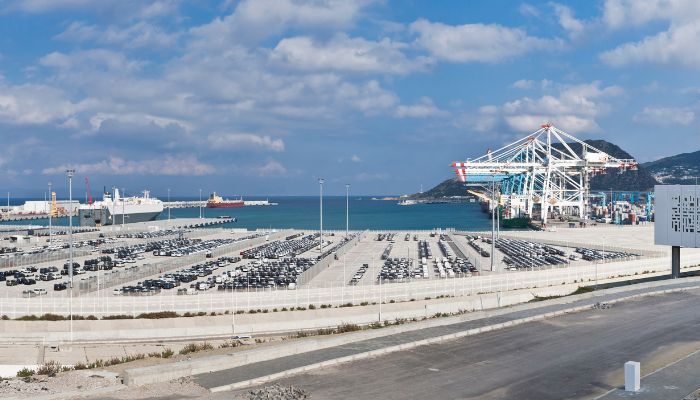

It ranks as the 24th most extensive container facility globally, linked to over 180 ports across 70 countries in Europe, Asia, Africa, the Mediterranean and the Far East.
Tanger-Med handled 7,174,870 TEUs in 2021, and a total cargo volume of 101,055,713 passed through its general cargo terminal. The RORO terminal crossed the 400,000 mark in the same year, a remarkable achievement. This tremendous upward growth was achieved by port digitisation, reduction in waiting times, resumption of industrial exports and upgradation of port equipment.
Lying near the coast of Namibia with direct linkages to crucial shipping routes, Walvis Bay is a natural harbour and the biggest cargo port in Namibia. Visited by more than 3000 ships each year, it has an annual handling capacity of 5 million tonnes.
It provides efficient and reliable customer service and is renowned for its world-class facilities. Decked with refurbished infrastructure and modern port equipment, it deals with varied cargo types such as general cargo, breakbulk, liquid bulk and containers.
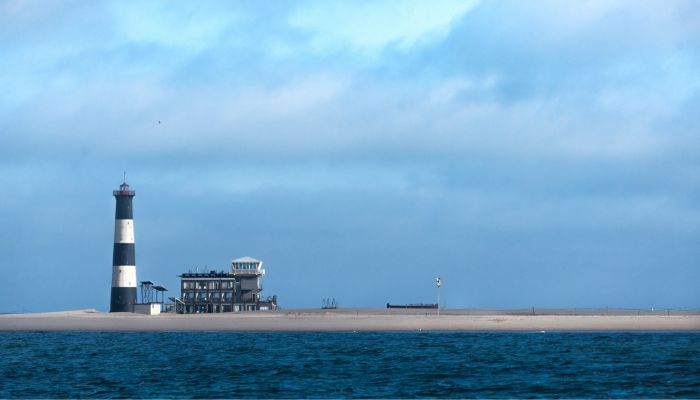

Numerous industrial units manufacture salt and plastics and engage in processing petroleum, seafood, and mining activities near the port area. Walvis Bay port serves these industries and the hinterland by exporting the finished products produced in these regions. A significant export commodity is bulk and bagged salt, followed by petroleum products.
Namibia possesses one of the world’s most productive fishing grounds, and the Walvis Bay port contributes immensely to the development of local fisheries. Two fishing berths in the inner port can be seen crowded with fishermen selling fresh seafood, a more significant proportion of which is packed for exportation.
Djibouti port is situated on the southern coastline of the Gulf of Tadjoura, facing the Red Sea. It is the main port of the country and a central regional transhipment hub, serving Ethiopia since 1998. Lying at the confluence of crucial shipping lines traversing Africa, Asia and Europe, this facility serves the COMESA market, connecting 19 nations and over 350 million people.
The port is divided into three subsidiary facilities. The Doraleh multipurpose port covers 690 hectares of land area and has a 1200 m total berthing line. It has specialised facilities for general cargo, containers, bulk fertilisers, grains etc. and can handle 8.2 million tonnes of cargo annually. Capesize ships weighing up to 100,000 DWT can be easily docked at the terminal’s ten berthing facilities.
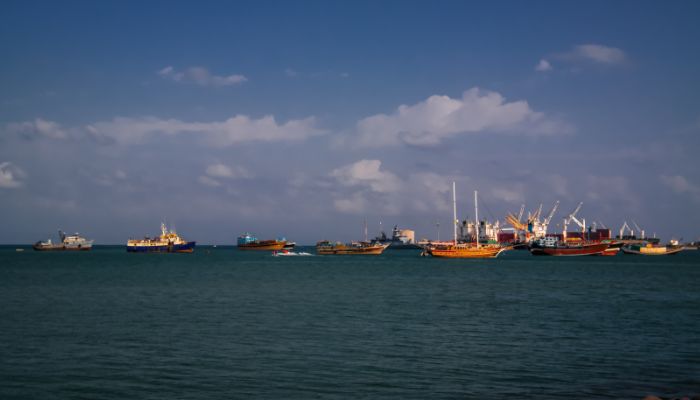

The Port of Tadjourah was opened in 2017 and is dedicated to potash exports. The 40-hectare port comprises two wharves measuring 455 m for accommodating 65,000 DWT ships. It also has a RORO terminal covering 200 m with a draft of 12 m. Around 4 million tonnes of cargo is handled at this sub-port.
Lastly, the Damerjog Livestock port spans 50 hectares and receives five livestock carriers on its 700 m long quay. It consists of a barn, animal treatment, inspection shed, and storage areas. About 10 million heads of livestock are handled at the facility every year.
You might also like to read-
Disclaimer: The authors’ views expressed in this article do not necessarily reflect the views of The Marine Learners. Data and charts, if used, in the article have been sourced from available information and have not been authenticated by any statutory authority. The author and The Marine Learners do not claim it to be accurate nor accept any responsibility for the same. The views constitute only the opinions and do not constitute any guidelines or recommendations on any course of action to be followed by the reader.
The article or images cannot be reproduced, copied, shared, or used in any form without the permission of the author and The Marine Learners.










We believe that knowledge is power, and we’re committed to empowering our readers with the information and resources they need to succeed in the merchant navy industry.
Whether you’re looking for advice on career planning, news and analysis, or just want to connect with other aspiring merchant navy applicants, The Marine Learners is the place to be.